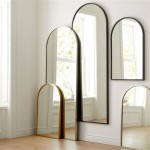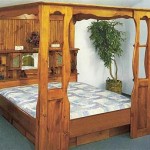Which Mirrors Are Used In Solar Cookers?
Solar cookers represent a sustainable and environmentally friendly cooking alternative, harnessing the power of direct sunlight to heat food. The efficacy of a solar cooker largely depends on its ability to concentrate sunlight onto a cooking area. Mirrors, or reflective surfaces, play a critical role in achieving this concentration. The selection of an appropriate mirror type is paramount, impacting the cooker's efficiency, durability, and overall performance. Different types of mirrors possess varying reflective properties and cost implications, making the choice a significant factor in solar cooker design.
The basic principle behind solar cooking involves capturing sunlight and focusing it onto a smaller area, typically a dark-colored cooking pot or surface. The concentrated solar energy increases the temperature within the cooker, facilitating the cooking process. Mirrors serve as the primary component for directing and intensifying sunlight. The reflective material and its surface quality directly influence the amount of solar radiation captured and delivered to the cooking zone. Various parameters, such as reflectivity, durability, and cost-effectiveness, are considered when selecting mirrors for solar cookers.
Key Considerations for Mirror Selection
Several factors influence the choice of mirrors for solar cookers. These considerations are vital to optimizing the cooker's performance and ensuring its longevity.
Reflectivity: Reflectivity is the most critical parameter. It refers to the percentage of incident sunlight that the mirror reflects. A higher reflectivity translates to more solar energy being directed towards the cooking area, resulting in faster cooking times and higher attainable temperatures. The ideal mirror should reflect a broad spectrum of sunlight, encompassing visible light and near-infrared radiation, which both contribute to heating. Reflectivity is influenced by the coating material and the smoothness of the mirror's surface. Degradation of the reflective surface due to environmental factors such as humidity, dust, and UV exposure can significantly reduce reflectivity over time. Therefore, selecting mirrors with high initial reflectivity and resistance to environmental degradation is essential.
Durability: Solar cookers are often used outdoors and exposed to a wide range of weather conditions. Consequently, the mirrors must be durable and capable of withstanding environmental stressors. The mirror material and any protective coatings should be resistant to scratching, corrosion, and UV degradation. Some mirror types are more prone to damage from impact or thermal stress. The backing material should also be weather-resistant to prevent delamination and maintain the integrity of the reflective surface. Proper mounting and support structures are necessary to protect the mirrors from physical damage and ensure their long-term performance.
Cost-Effectiveness: Affordability is a significant factor, especially in developing regions where solar cookers are often deployed. Low-cost mirror options may have lower reflectivity or durability, requiring more frequent replacement or resulting in reduced cooker performance. Balancing the initial cost with the long-term performance and maintenance requirements is crucial. Exploring locally available materials or recycled mirrors can help reduce the cost of solar cookers, making them more accessible to communities with limited resources. The cost should also factor in transportation and installation costs.
Common Types of Mirrors Used in Solar Cookers
Several mirror types are commonly utilized in solar cooker construction, each with its unique advantages and disadvantages.
Glass Mirrors: Glass mirrors are a popular choice due to their high reflectivity and relatively low cost. They are typically made by coating a glass sheet with a thin layer of reflective material, such as silver or aluminum, and then protecting it with a layer of paint or sealant. Silver-backed mirrors generally have higher reflectivity than aluminum-backed mirrors, but they are also more expensive. Glass mirrors are relatively durable, but they can be fragile and susceptible to breakage. Annealed glass is less durable and more prone to shattering compared to tempered glass. Tempered glass is heat-treated to increase its strength and resistance to thermal stress, making it a better option for solar cookers. The weight of glass mirrors can be a concern, especially for portable solar cookers.
Acrylic Mirrors: Acrylic mirrors offer a lightweight alternative to glass mirrors. They are made from a plastic material that is coated with a reflective layer. Acrylic mirrors are less prone to breakage than glass mirrors, making them a safer option, especially in areas where damage is more likely. However, acrylic mirrors are generally more expensive than glass mirrors and have lower reflectivity. They are also more susceptible to scratching and UV degradation. Special coatings can be applied to acrylic mirrors to improve their scratch resistance and UV protection, but this adds to the cost. The flexibility of acrylic mirrors allows them to be formed into curved shapes, which can be beneficial for some solar cooker designs.
Reflective Films: Reflective films are thin sheets of plastic or metal that are coated with a reflective material. These films can be applied to a variety of surfaces, such as cardboard, wood, or plastic, to create a reflective surface. Reflective films are lightweight, flexible, and relatively inexpensive. Silvered polymer films boast greater than 90% specular reflectance. These are especially useful for folding panel cookers, where their flexibility and lack of weight are considerable advantages. However, reflective films are typically less durable than glass or acrylic mirrors and are prone to scratching, tearing, and UV degradation. The reflectivity of reflective films can also be lower than that of glass or acrylic mirrors. The longevity of the reflective film depends on the quality of the adhesive used to bond it to the substrate and the protection it receives from environmental factors. Periodic replacement of the reflective film may be necessary to maintain the cooker's performance.
Advanced Mirror Technologies
Ongoing research and development efforts are focused on improving the performance and durability of mirrors for solar cookers.
Enhanced Reflective Coatings: Advanced coating technologies are being developed to enhance the reflectivity and durability of mirrors. These coatings may involve multiple layers of different materials, each designed to optimize a specific property, such as reflectivity, UV protection, or scratch resistance. Some coatings incorporate nanoparticles to improve their performance. Self-cleaning coatings, which repel dust and dirt, can also help maintain the reflectivity of mirrors over time. These advanced coatings can significantly increase the cost of mirrors, but the improved performance and lifespan may justify the investment in certain applications.
Concentrating Solar Collectors (CSP) Mirrors: CSP mirrors, designed for large-scale solar power plants, are engineered for high reflectivity, durability, and long-term performance in harsh environmental conditions. While these mirrors are typically more expensive than standard mirrors, they offer significant advantages in terms of efficiency and lifespan. Adapting CSP mirror technology for use in solar cookers can improve their performance and reduce the need for frequent maintenance or replacement. The large size and weight of some CSP mirrors may limit their applicability in smaller, portable solar cookers.
Fresnel Reflectors: Fresnel reflectors use a series of small, angled reflective surfaces to focus sunlight onto a target. These reflectors can be made from a variety of materials, including glass, acrylic, and reflective films. Fresnel reflectors are lightweight and can be easily manufactured, making them a cost-effective option for solar cookers. They can also be designed to fold flat for easy storage and transportation. The efficiency of Fresnel reflectors depends on the accuracy of the angles and the quality of the reflective surfaces. Careful design and manufacturing are essential to optimize their performance.
The selection of mirrors for solar cookers represents a trade-off between various factors, including reflectivity, durability, cost, and weight. Understanding the properties of different mirror types and the specific requirements of the solar cooker design is crucial for making an informed decision. Continued development of advanced mirror technologies promises to further enhance the performance and affordability of solar cookers, promoting their wider adoption as a sustainable cooking solution.

Solar Cooker

Concave Mirror Solar Cooker

Draw The Ray Diagram To Show Concave Mirror In Reflector Solar Cooker Brainly

Solved Which Of The Following Mirrors Is Used For Solar Energy Stor

Solar Cooker Technologies

How To Make A Solar Cooker In Diffe Steps

Afghans Turning To Solar Cookers For An Easier Life World Aaj English Tv

Solar Cookig Tips

Solar Cooker Definition Construction Working Types Advantage

Dish Type Solar Cooker At Best In Udaipur By Shree Ji Energy Solutions Id 4153569755








